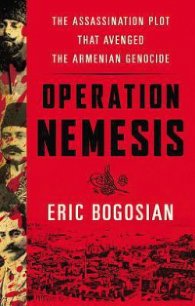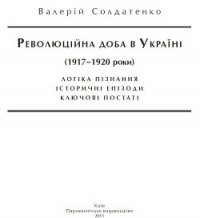The Andromeda Strain - Crichton Michael (книги полностью бесплатно txt) 📗
Hall nodded, and left.
In delta sector, the computers hummed and clicked softly, as Captain Arthur Morris punched through a new program on the console. Captain Morris was a programmer; he had been sent to delta sector by the command on Level I because no MCN messages had been received for nine hours. It was possible, of course, that there had been no priority transmissions; but it was also unlikely.
And if there had been unreceived MCN messages, then the computers were not functioning properly. Captain Morris watched as the computer ran its usual internal check program, which read out as all circuits functioning.
Unsatisfied, he punched in the CHECKLIM program, a more rigorous testing of the circuit banks. It required 0.03 seconds for the machine to come back with its answer: a row of five green lights blinked on the console. He walked over to the teleprinter and watched as it typed:
MACHINE FUNCTION ON ALL CIRCUITS WITHIN RATIONAL INDICES
He looked and nodded, satisfied. He could not have known, as he stood before the teleprinter, that there was indeed a fault, but that it was purely mechanical, not electronic, and hence could not be tested on the check programs. The fault lay within the teleprinter box itself. There, a sliver of paper from the edge of the roll had peeled away and, curling upward, had lodged between the bell and striker, preventing the bell from ringing. It was for this reason that no MCN transmissions had been recorded.
Neither machine nor man was able to catch the error.
18. The Noon Conference
ACCORDING TO PROTOCOL, THE TEAM MET EVERY twelve hours for a brief conference, at which results were summarized and new directions planned. In order to save time the conferences were held in a small room off the cafeteria; they could eat and talk at the same time.
Hall was the last to arrive. He slipped into a chair behind his lunch- two glasses of liquid and three pills of different colors- just as Stone said, "We'll hear from Burton first."
Burton shuffled to his feet and in a slow, hesitant voice outlined his experiments and his results. He noted first that he had determined the size of the lethal agent to be one micron.
Stone and Leavitt looked at each other. The green flecks they had seen were much larger than that; clearly, infection could be spread by a mere fraction of the green fleck.
Burton next explained his experiments concerning airborne transmission, and coagulation beginning at the lungs. He finished with his attempts at anticoagulation therapy.
"What about the autopsies?" Stone said. "What did they show?"
"Nothing we don't already know. The blood is clotted throughout. No other demonstrable abnormalities at the light microscope level."
"And clotting is initiated at the lungs?"
"Yes. Presumably the organisms cross over to the bloodstream there- or they may release a toxic substance, which crosses over. We may have an answer when the stained sections are finished. In particular, we will be looking for damage to blood vessels, since this releases tissue thromboplastin, and stimulates clotting at the site of the damage."
Stone nodded and turned to Hall, who told of the tests carried out on his two patients. He explained that the infant was normal to all tests and that Jackson had a bleeding ulcer, for which he was receiving transfusions.
"He's revived," Hall said. "I talked with him briefly."
Everyone sat up.
"Mr. Jackson is a cranky old goat of sixty-nine who has a two-year history of ulcer. He's bled out twice before: two years ago, and again last year. Each time he was warned to change his habits; each time he went back to his old ways, and began bleeding again. At the time of the Piedmont contact, e was treating his problems with his own regimen: a bottle of aspirin a day and some Sterno on top of it. He says this left him a little short of breath."
"And made him acidotic as hell," Burton said.
"Exactly."
Methanol, when broken down by the body, was converted to formaldehyde and formic acid. In combination with aspirin, it meant Jackson was consuming great quantities of acid. The body had to maintain its acid-base balance within fairly narrow limits or death would occur. One way to keep the balance was to breathe rapidly, and blow off carbon dioxide, decreasing carbonic acid in the body.
Stone said, "Could this acid have protected him from the organism?"
Hall shrugged. "Impossible to say."
Leavitt said, "What about the infant? Was it anemic?"
"No," Hall said. "But on the other hand, we don't know for sure that it was protected by the same mechanism. It might have something entirely different."
"How about the acid-base balance of the child?"
"Normal," Hall said. "Perfectly normal. At least it is now."
There was a moment of silence. Finally Stone said, "Well, you have some good leads here. The problem remains to discover what, if anything, that child and that old man have in common. Perhaps, as you suggest, there is nothing in common. But for a start, we have to assume that they were protected in the same way, by the same mechanism."
Hall nodded.
Burton said to Stone, "And what have you found in the capsule?"
"We'd better show you," Stone said.
"Show us what?"
"Something we believe may represent the organism," Stone said.
The door said MORPHOLOGY. Inside, the room was partitioned into a place for the experimenters to stand, and a glass-walled isolation chamber further in. Gloves were provided so the men could reach into the chamber and move instruments about.
Stone pointed to the glass dish, and the small fleck of black inside it.
"We think this is our 'meteor,' " he said. "We have found something apparently alive on its surface. There were also other areas within the capsule that may represent life. We've brought the meteor in here to have a look at it under the light microscope."
Reaching through with the gloves, Stone set the glass dish into an opening in a large chrome box, then withdrew his hands.
"The box," he said, "is simply a light microscope fitted with the usual image intensifiers and resolution scanners. We can go up to a thousand diameters with it, projected on the screen here."
Leavitt adjusted dials while Hall and the others stared at the viewer screen.
"Ten power," Leavitt said.
On the screen, Hall saw that the rock was jagged, blackish, dull. Stone pointed out green flecks.
"One hundred power."
The green flecks were larger now, very clear.
"We think that's our organism. We have observed it growing; it turns purple, apparently at the point of mitotic division."
"Spectrum shift?"
"Of some kind."
"One thousand power," Leavitt said.
The screen was filled with a single green spot, nestled down in the jagged hollows of the rock. Hall noticed the surface of the green, which was smooth and glistening, almost oily.
"You think that's a single bacterial colony?"
"We can't be sure it's a colony in the conventional sense," Stone said. "Until we heard Burton's experiments, we didn't think it was a colony at all. We thought it might be a single organism. But obviously the single units have to be a micron or less in size; this is much too big. Therefore it is probably a larger structure- perhaps a colony, perhaps something else."
As they watched, the spot turned purple, and green again. "It's dividing now," Stone said. "Excellent."
Leavitt switched on the cameras.
"Now watch closely."
The spot turned purple and held the color. It seemed to expand slightly, and for a moment, the surface broke into fragments, hexagonal in shape, like a tile floor.
"Did you see that?"
"It seemed to break up."
"Into six-sided figures."
"I wonder," Stone said, "whether those figures represent single units."
"Or whether they are regular geometric shapes all the time, or just during division?"
"We'll know more," Stone said, "after the EM." He turned to Burton. "Have you finished your autopsies?"
"Yes."
"Can you work the spectrometer?"
"I think so."
"Then do that. It's computerized, anyway. We'll want an analysis of samples of both the rock and the green organism."
"You'll get me a piece?"
"Yes." Stone said to Leavitt: "Can you handle the AA analyzer? "
"Yes."
"Same tests on that."
"And a fractionation?"
"I think so," Stone said. "But you'll have to do that by hand."
Leavitt nodded; Stone turned back to the isolation chamber and removed a glass dish from the light microscope. He set it to one side, beneath a small device that looked like a miniature scaffolding. This was the microsurgical unit.
Microsurgery was a relatively new skill in biology- the ability to perform delicate operations on a single cell. Using microsurgical techniques, it was possible to remove the nucleus from a cell, or part of the cytoplasm, as neatly and cleanly as a surgeon performed an amputation.
The device was constructed to scale down human hand movements into fine, precise miniature motions. A series of gears and servomechanisms carried out the reduction; the movement of a thumb was translated into a shift of a knife blade millionths of an inch.
Using a high magnification viewer, Stone began to chip away delicately at the black rock, until he had two tiny fragments. He set them aside in separate glass dishes and proceeded to scrape away two small fragments from the green area.
Immediately, the green turned purple, and expanded.
"It doesn't like you," Leavitt said, and laughed.
Stone frowned. "Interesting. Do you suppose that's a nonspecific growth response, or a trophic response to injury and irradiation? "
"I think," Leavitt said, "that it doesn't like to be poked at."
"We must investigate further," Stone said.



